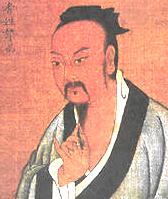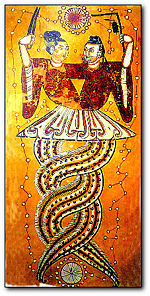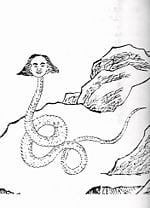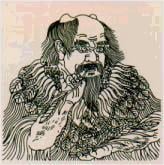Three Sovereigns and Five Emperors
| History of China | |||||||
|---|---|---|---|---|---|---|---|
| ANCIENT | |||||||
| 3 Sovereigns and 5 Emperors | |||||||
| Xia Dynasty 2070–1600 B.C.E. | |||||||
| Shang Dynasty 1600–1046 B.C.E. | |||||||
| Zhou Dynasty 1122–256 B.C.E. | |||||||
| Western Zhou | |||||||
| Eastern Zhou | |||||||
| Spring and Autumn Period | |||||||
| Warring States Period | |||||||
| IMPERIAL | |||||||
| Qin Dynasty 221 B.C.E.–206 B.C.E. | |||||||
| Han Dynasty 206 B.C.E.–220 C.E. | |||||||
| Western Han | |||||||
| Xin Dynasty | |||||||
| Eastern Han | |||||||
| Three Kingdoms 220–280 C.E. | |||||||
| Wu, Shu & Wei | |||||||
| Jin Dynasty 265–420 C.E. | |||||||
| Western Jin | |||||||
| Eastern Jin | 16 Kingdoms 304–439 C.E. | ||||||
| Southern & Northern Dynasties 420–589 C.E. | |||||||
| Sui Dynasty 581–619 C.E. | |||||||
| Tang Dynasty 618–907 C.E. | |||||||
| 5 Dynasties & 10 Kingdoms 907–960 C.E. |
Liao Dynasty 907–1125 C.E. | ||||||
| Song Dynasty 960–1279 C.E. |
|||||||
| Northern Song | W. Xia Dyn. | ||||||
| Southern Song | Jin Dyn. | ||||||
| Yuan Dynasty 1271–1368 C.E. | |||||||
| Ming Dynasty 1368–1644 C.E. | |||||||
| Qing Dynasty 1644–1911 C.E. | |||||||
| MODERN | |||||||
| Republic of China 1911–present | |||||||
| People's Republic of China 1949–present |
Republic of China | ||||||
Timeline of Chinese history Dynasties in Chinese history Military history of China History of Chinese art History of science and technology in China History of Education in China | |||||||
The Three Sovereigns and Five Emperors (Chinese: 三皇五帝; pinyin: Sānhuáng wǔdì; Wade-Giles: San-huang wu-ti) were mythological rulers of China during the period from c. 2852 B.C.E. to 2205 B.C.E., which is the time preceding the Xia Dynasty. The Three Sovereigns, sometimes known as the Three August Ones, were said to be god-kings or demigods who introduced important aspects of Chinese culture, such as agriculture, fishing, herbal medicine, writing, and the drinking of tea, and in some cases created men and animals. They were known variously as The Heavenly Sovereign, The Earthly Sovereign, and The Human Sovereign; or Fuxi, Nüwa, and Shennong. Because of their lofty virtue they lived to a great age and ruled over a period of great peace.
The Five Emperors were legendary, morally perfect sage-kings. According to the Records of the Grand Historian they were: The Yellow Emperor (黄帝), Zhuanxu (顓頊), Emperor Ku (帝嚳), Emperor Yao (堯), and Emperor Shun (舜). Yao and Shun are also known as the "Two Emperors," and, along with Yu the Great (禹), founder of the Xia dynasty, were considered to be model rulers and moral exemplars by Confucians in later Chinese history.
The Three Sovereigns
The Three Sovereigns (三皇), sometimes known as the Three August Ones, were said to be god-kings, or demigods, who used their magical powers to improve the lives of their people. The character 帝 dì/dei5 is most often translated using its modern sense, which did not arise until after the advent of an imperial state under Qin Shi Huang (秦始皇, Qínshĭhuáng/Cen4héi2wong4). Its original meaning, and the most likely translation thereof, is "supreme being," rather than "emperor." The character 帝 originally represented a shaman wearing a liturgical mantel. Because of their lofty virtue, they lived to a great age and ruled over a period of great peace.
The Three Sovereigns are ascribed various identities in different Chinese historical texts. The Records of the Grand Historian by Sima Qian states that they were:
- The Heavenly Sovereign (天皇) that ruled for 18,000 years
- The Earthly Sovereign (地皇) that ruled for 11,000 years
- The Human Sovereign (泰皇 or 人皇) that ruled for 45,600 years,
The Yundou shu (運斗樞) and Yuanming bao (元命苞) identify them as:
- Fuxi (伏羲)
- Nüwa (女媧)
- Shennong (神農)
The I Ching begins:
In the old times of King Fuxi’s regime, he observed sky and the stars when he looks upwards, and researched the earth when he looks downwards, and watched the birds and beasts to see how they live in their environment. He took examples from nearby and far away, and then made 8 Yin Yang signs to simulate the rules of universe… After Fuxi died, Shennong rises. He made Plow and teach people how to raise crops and fishing. He invented money and market for the exchange of goods.
The Shangshu dazhuan (尚書大傳) and Baihu tongyi (白虎通義) replace Nüwa with Suiren (燧人), the inventor of fire. The Diwang shiji (帝王世紀) replaces Nüwa with the Yellow Emperor (黄帝), the supposed ancestor of all Han Chinese people.
Fuxi
In Chinese mythology, Fu Xi or Fu Hsi (Chinese: 伏羲; pinyin: fúxī; aka Paoxi (Simplified Chinese: 庖牺; Traditional Chinese: 庖犧; pinyin: páoxī)), mid 2800s B.C.E., was the first of the mythical Three Sovereigns (三皇 sānhuáng) of ancient China. He was born on the lower-middle reaches of the Yellow River in a place called Chengji (possibly modern Lantian, Shaanxi or Tianshui, Gansu).[1] According to legend, the land was swept by a great flood and only Fuxi and his sister Nüwa survived. They retired to Kunlun Mountain, where they prayed for a sign from the Emperor of Heaven. The divine being approved their union and the siblings set about procreating the human race.[2] Fu Xi then came to rule over his descendants; reports of the length of his reign vary in different sources from 115 years (2852-2737 B.C.E.) to 116 years (2952-2836 B.C.E.).
He lived for 197 years altogether and died at a place called Chen (modern Huaiyang, Henan), where his mausoleum can still be found.[3]
Social importance
"Among the three primogenitors of Hua-Xia civilization, Fu Xi in Huaiyang Country ranks first (Couplet engraved on column of Fu Xi Temple, Huaiyang Country, Henan Province).
During the time of his predecessor Nüwa (who according to some sources was also his wife and sister), society was matriarchal and primitive. Childbirth was regarded as miraculous, not requiring the participation of a male, and children only knew their mothers. As the reproductive process became better understood, ancient Chinese society moved towards a patriarchal system and Fu Xi assumed primary importance.[4]
In the beginning there was as yet no moral or social order. Men knew their mothers only, not their fathers. When hungry, they searched for food; when satisfied, they threw away the remnants. They devoured their food hide and hair, drank the blood, and clad themselves in skins and rushes. Then came Fu Xi and looked upward and contemplated the images in the heavens, and looked downward and contemplated the occurrences on earth. He united man and wife, regulated the five stages of change, and laid down the laws of humanity. He devised the eight trigrams, in order to gain mastery over the world (Ban Gu, Baihu tongyi).
Fu Xi was a cultural hero, reputed to be the inventor of writing, fishing, and animal trapping. He taught his subjects to cook, to fish with nets, and to hunt with weapons made of iron. He instituted marriage and offered the first open air sacrifices to heaven. A stone tablet, dated 160 C.E. shows Fu Xi with Nüwa.
Traditionally, Fu Xi is considered the originator of the I Ching (also known as the Yi Jing or Zhou Yi), which is attributed to his reading of the He Map (or the Yellow River Map). According to this tradition, the arrangement of the trigrams (八卦, bāgùa) of the I Ching was revealed to Fu Xi supernaturally, in markings on the back of a mythical dragon-horse (sometimes said to be a turtle) that emerged from the river Luo. This arrangement precedes the compilation of the I Ching during the Zhou dynasty. This discovery is also said to have been the origin of calligraphy. Fu Hsi is also credited with the invention of the Guqin, together with Shennong and Huang Di.
Nüwa
In Chinese mythology, Nüwa (Traditional Chinese: 女媧; Simplified Chinese: 女娲; Pinyin: nǚwā) was a mythological character, generally represented as a female creating and reproducing people after a great calamity. (Other later traditions attribute this creation myth to either Pangu or Yu Huang.) The earliest literary reference, in Liezi (列子) by Lie Yukou (列圄寇, 475-221 B.C.E.), describes Nüwa repairing the heavens after a great flood, and states that Nüwa molded the first people out of clay. The name Nuwa first appears in "Elegies of Chu" (楚辞, or Chuci), chapter 3: "Asking Heaven" by Qu Yuan (屈原, 340-278 B.C.E.), in another account of Nuwa molding figures from the yellow earth, and giving them life and the ability to bear children. Demons then fought and broke the pillars of the Heavens, and Nüwa worked unceasingly to repair the damage, melting down the five-colored stones to mend the Heavens. Huainanzi (淮南子) by Liu An (劉安, 179-122 B.C.E.) gives a similar account. Sima Qian (司馬遷, 145-90 B.C.E.), in Shiji (史記), section 1: BenJi (本紀), chapter 1: Prologue, describes Nuwa as a man with the last name of Feng, who is related to Fuxi; and possibly related to Fenghuang (鳳凰). In the earliest Chinese dictionary, Shuowen Jiezi (說文解字), ) by Xu Shen (58-147 C.E.), Nüwa is said to have been both the sister and the wife of Fuxi. Several works mention the relationship between Nuwa and Fuxi, including Duyi Zhi (獨异志) by LiRong (李榮, 618-907 C.E.); "Four Branches of Literature Complete Library" (四庫全書, or Siku Quanshu); Sima Zhen (司馬貞, 618–907 C.E.); and "Taiping Anthologies for the Emperor" (太平御覽, or Taiping Yulan), by Li Fang (李昉, 960–1279 C.E.).
Nüwa is presented in many myths, performing various roles as a wife, sister, man, tribal leader (or even emperor), creator, or maintainer. Most myths present Nüwa as female in a procreative role after a calamity. Nuwa is associated with a deluge myth, in which the water god Gong Gong smashed his head against Mount Buzhou (不周山), a pillar holding up the sky, collapsing it and causing the sky to tilt towards the northwest and the earth to shift to the southeast, so that there were great floods and the people suffered. Nüwa cut off the legs of a giant tortoise and used them to replace the fallen pillar, and sealed the broken sky using stones of seven different colors, but she was unable to fully correct the tilted sky. This explains the phenomenon that sun, moon, and stars move towards the northwest, and that rivers in China flow southeast into the Pacific Ocean. Other versions of the story describe Nüwa going up to heaven and stopping the flood by filling the gap with her body (half human, half serpent). Some of the minorities in South-Western China hail Nüwa as their goddess and some festivals, such as the "Water-Splashing Festival," are in part a tribute to her sacrifices. Nüwa is also the traditional divine goddess of the Miao people.
Another major role of Nüwa is that of a creator deity. Most stories confine her to the creation of animals and humankind, rather than the entire world. Many of these stories feature humankind being created or restored after a catastrophe. One myth says that Nüwa existed in the beginning of the world. She felt lonely, as there were no animals, so she began the creation of animals and humans. On the first day she created chickens. On the second day she created dogs. On the third day, she created sheep. On the fourth day she created pigs. On the fifth day she created cows. On the sixth day, she created horses. On the seventh day she began creating men from yellow clay, sculpting each one individually. After creating hundreds of figures in this way she became tired of the laborious process, so she dipped a rope in clay and flicked it, so that blobs of clay landed everywhere. The hand-crafted figures became nobles and the clay blobs became commoners. A variation on this story relates that some of the figures melted in the rain as Nüwa was waiting for them to dry, and in this way sickness and physical abnormalities came into existence.
By the Han Dynasty (206–220 C.E.), Nuwa was described in literature with her husband, Fuxi, as the first of the Three August Ones and Five Emperors, and they were often called the "parents of humankind." However, paintings depicting them joined as half people, half snake or dragon, date to the Warring States period (fifth century B.C.E. to 220 B.C.E.).
Shennong
Shennong (Traditional Chinese: 神農; Simplified Chinese: 神农; pinyin: Shénnóng), or the Emperor of the five grains (Traditional Chinese: 五穀先帝; Simplified Chinese: 五谷先帝; pinyin: Wǔgǔ xiāndì), is believed to have lived some 5,000 years ago, and taught ancient China how to cultivate grains as food, so as to avoid killing animals. Appropriately, his name means "the Divine Farmer." Shennong is credited with identifying hundreds of medical (and poisonous) herbs by personally testing their properties, which was crucial to the development of Traditional Chinese medicine. The most well-known work attributed to Shennong is the The Divine Farmer's Herb-Root Classic (Traditional Chinese: 神農本草經; Simplified Chinese: 神农本草经; pinyin: Shénnóng běncǎo jīng), first compiled several thousand years after Shennong supposedly existed, during the end of the Western Han Dynasty. It lists the various medical herbs such as reishi which were discovered by Shennong and given grade and rarity ratings.
This work, considered to be the earliest Chinese pharmacopoeia, includes 365 medicines derived from minerals, plants, and animals. Tea, which acts as an antidote against the poisonous effects of some seventy herbs, is also said to be his discovery. Chinese legend places this discovery in 2737 B.C.E., when Shennong first tasted tea from tea leaves on burning tea twigs, which were carried up from the fire by the hot air, and landed in his cauldron of boiling water.[5] Shennong is venerated as the Father of Chinese medicine. He is also believed to have introduced the technique of acupuncture.
A close relative of the Yellow Emperor, he is said to be a patriarch of the Chinese. The Han Chinese regarded them both as their joint ancestors. He is also considered one of the ancestors of the Vietnamese people. He was deified as one of the San Huang for his contributions to humankind.
Shennong is said to have played a part in the creation of the Guqin, together with Fuxi and the Yellow Emperor.
The Five Emperors
The Five Emperors were legendary, morally perfect sage-kings. According to the Records of the Grand Historian they were:
- The Yellow Emperor (黄帝)
Huangdi (Traditional Chinese: 黃帝; Simplified Chinese: 黄帝; pinyin: Huángdì), or the Yellow Emperor, is considered the ancestor of all Han Chinese in Chinese mythology. According to the historian Sima Qian (145 B.C.E.-90 B.C.E.), the Yellow Emperor reigned from 2697 B.C.E. to 2598 B.C.E. During the Han Dynasty (202 B.C.E.-220 C.E.), he emerged as a chief deity of Taoism. His legendary victory in the war against Emperor Chi You at the Battle of Zhuolu is seen as the establishment of the Han Chinese nationality. Among his other accomplishments, the Yellow Emperor has been credited with the invention of the principles of Traditional Chinese medicine. The Huangdi Neijing (黄帝内經 Inner Canon of Huangdi) was supposedly composed in collaboration with his physician, Qibo. However, modern historiographers generally consider it to have been compiled from ancient sources by a scholar living between the Zhou and Han dynasties, more than 2,000 years later. He is said to have lived to the age of 100, and to have attained immortality after his physical death.
His wife, Lúo Zǔ, is said to to have taught the Chinese how to weave the silk from silkworms, and his historian, Cāng Jié, to have created the first Chinese characters. Legend also says that the Yellow Emperor invented a magical compass, played a part in the creation of the Guqin (seven-stringed musical instrument), together with Fuxi and Shennong, and to have invented the earliest form of the Chinese calendar, whose current sexagenary cycles are counted based on his reign. Atop Mount Dongwang, Huang Di captured the beast, Bai Ze, who described to him all the 11,520 types of monsters, shape-shifters, demons, and spirits in the world. Huang Di's retainer recorded this in pictures, which later became the book, Bai Ze Tu, which no longer exists.[6] Ling Lun is supposed to have given the emperor flutes tuned to the sounds of birds, which is said to be the foundation of Chinese traditional music.
- Zhuanxu (顓頊)
Zhuanxu (Traditional Chinese: 顓頊; Simplified Chinese: 颛顼; pinyin: Zhuānxū), also known as Gaoyang (高陽), a grandson of the Yellow Emperor, led the Shi clan in an eastward migration to present-day Shandong, where intermarriages with the Dongyi clan enlarged and augmented their tribal influences. At age twenty, he became their sovereign, going on to rule for seventy-eight years until his death.
He made contributions to a unified calendar and astrology, instigated religious reforms to oppose shamanism, advocated the patriarchal (as opposed to the previous matriarchal) system, and forbade close-kin marriage.
- Emperor Ku (帝嚳)
Kù (Traditional Chinese: 帝嚳) was the great grandson of the Yellow Emperor. According to speculative dates (from after 100 B.C.E.) he ruled from c. 2436 B.C.E.–c. 2366 B.C.E.
- Emperor Yao (堯)

Yao (Traditional Chinese: 堯, Simplified Chinese: 尧) (2358-2258 B.C.E.), also known as Yaotang-shi (陶唐氏), was born Yi Fangxun (伊放勳) or Yi Qi (伊祈), the second son of Emperor Ku and Qingdu (慶都). He is also known as Tang Yao (唐堯).
Often extolled as the morally perfect sage-king, Yao's benevolence and diligence served as a model for future Chinese monarchs and emperors. Early Chinese often speak of Yao, Shun, and Yu as historical figures, and contemporary historians believe they may represent leader-chiefs of allied tribes who established a unified and hierarchical system of government during a transition period to patriarchal feudal society.
According to legend, Yao became the ruler at 20, and died at the age of 119, when he passed his throne to Great Shun, to whom he gave his two daughters in marriage.
Of his many contributions, Yao is said to have invented the game of weiqi (go), reportedly as an amusement for his slow-witted son.
- Emperor Shun (舜)
Shun (Traditional Chinese: 舜) was a legendary leader of ancient China during the 23rd - 22nd century B.C.E., whose half-century of rule was one of the longest in Chinese history. Born Yao Chonghua (姚重華), he was also known as Youyu-shi (有虞氏), the Great Shun (大舜) or Yu Shun (虞舜). The name of Shun's mother was Wudeng (握登), and his birthplace was Yaoxu (姚墟). He received the mantle of leadership from Emperor Yao at the age of 53 and died at 100, after relinquishing the seat of power to Yu, who founded the legendary Xia Dynasty. Shun's capital was at Puban (蒲阪) (presently in Shanxi).
In later centuries, Yao and Shun were glorified for their virtue by Confucian philosophers. Shun was particularly renowned for his modesty and filial piety (xiao, 孝). According to legend, he was treated with hostility and jealousy by his parents and younger brother, yet he remained loving and free of resentment towards them. Emperor Yao chose Shun as his successor and put him on the throne in the year of Jiwei (己未). Yao's capital was in Ji (冀) which, presently, is also in Shanxi province. Shun is also renowned as the originator of the music called Daoshao (大韶), a symphony of nine Chinese music instruments.
In February of the seventeenth year of his reign, dancing was first taught at schools. In the twenty-fifth year of his regime, he received the bow and arrowas gifts from an envoy of the Xishen (息慎) tribe. In January of the thirty-third year of his regime, nine provinces were re-established in China.
Yao and Shun are also known as the Two Emperors, and, along with Yu the Great (禹), founder of the Xia dynasty, were considered to be model rulers and moral exemplars by Confucians in later Chinese history. The Shangshu Xu (尚書序) and Diwang shiji include Shaohao (少昊) instead of the Yellow Emperor.
The Song of Chu (楚辭) identifies the Five Emperors as directional gods:
- Shaohao (east)
The son of the Yellow Emperor Huang Di, Shaohao was the leader of the Yi people, and shifted their capital to Shandong Qufu. After ruling for eighty-four years, he was succeeded by his nephew Zhuanxu. Shaohao's tomb, which is in the form of a large pyramid, is in present-day Jiuxian ("old prefecture") village, east of Qufu, Shandong province.
- Zhuanxu (north)
Zhuanxu (Traditional Chinese: 顓頊; Simplified Chinese: 颛顼; pinyin: Zhuānxū), also known as Gaoyang (高陽) was a grandson of the Yellow Emperor, Zhuanxu led the Shi clan in an eastward migration to present-day Shandong, where intermarriages with the Dongyi clan enlarged and augmented their tribal influences. At age twenty, he became their sovereign, ruling for seventy-eight years until his death. He made contributions to a unified calendar and to astrology; initiated religion reforms to oppose shamanism; upheld the patriarchal (as opposed to the previous matriarchal) system; and forbade close-kin marriage.
- Yellow Emperor (center)
- Shennong (west)
- Fuxi (south)
The Book of Rites (禮記) equates the Five Emperors with the Five Lineages (五氏), which comprise:
- Youchao-shi (有巢氏)
- Suiren-shi (燧人氏)
- Fuxi (伏羲氏)
- Nüwa (女媧氏)
- Shennong (神農氏)
The first historical Emperor of China was Qin Shi Huang (秦始皇), who coined a new term for "Emperor" (huangdi 皇帝) by combining the titles of "sovereign" (huang, 皇) and "god-king" (di, 帝).
Notes
- ↑ Worshiping the Three Sage Kings and Five Virtuous Emperors—The Imperial Temple of Emperors of Successive Dynasties in Beijing (Beijing: Foreign Language Press, 2007). ISBN 978-7-119-04635-8
- ↑ Ibid.
- ↑ Ibid.
- ↑ Ibid.
- ↑ Jane Reynolds, Phil Gates, and Gaden Robinson, 365 Days of Nature and Discovery (New York: Harry N. Adams, Inc., 1994). ISBN 0-8109-3876-6
- ↑ S.H. Morgan, Haku-taku or Bai Ze. Retrieved September 15, 2007.
ReferencesISBN links support NWE through referral fees
- Birrell, Anne. 1993. Chinese Mythology: An Introduction. Baltimore: Johns Hopkins University Press. ISBN 0801845955
- Chang, Kwang-chih. 1983. Art, Myth, and Ritual: The Path to Political Authority in Ancient China. Cambridge, Mass: Harvard University Press. ISBN 0674048075
- Giddens, Sandra and Owen Giddens. 2006. Chinese Mythology. New York: Rosen Pub. Group. ISBN 1404207694
- Perkins, Dorothy. 1999. Encyclopedia of China: The Essential Reference to China, its History and Culture. New York: Facts on File. ISBN 0816026939
- Roberts, Jeremy. 2004. Chinese Mythology A to Z. New York: Facts on File. ISBN 0816048703
Credits
New World Encyclopedia writers and editors rewrote and completed the Wikipedia article in accordance with New World Encyclopedia standards. This article abides by terms of the Creative Commons CC-by-sa 3.0 License (CC-by-sa), which may be used and disseminated with proper attribution. Credit is due under the terms of this license that can reference both the New World Encyclopedia contributors and the selfless volunteer contributors of the Wikimedia Foundation. To cite this article click here for a list of acceptable citing formats.The history of earlier contributions by wikipedians is accessible to researchers here:
- Three_Sovereigns_and_Five_Emperors history
- Nuwa history
- Fu_Xi history
- Yellow_Emperor history
- Zhuanxu history
- Shaohao history
- Chinese_leader history
- Yao_(ruler) history
- Emperor_Ku history
- Zhuanxu history
- Shennong history
The history of this article since it was imported to New World Encyclopedia:
Note: Some restrictions may apply to use of individual images which are separately licensed.



